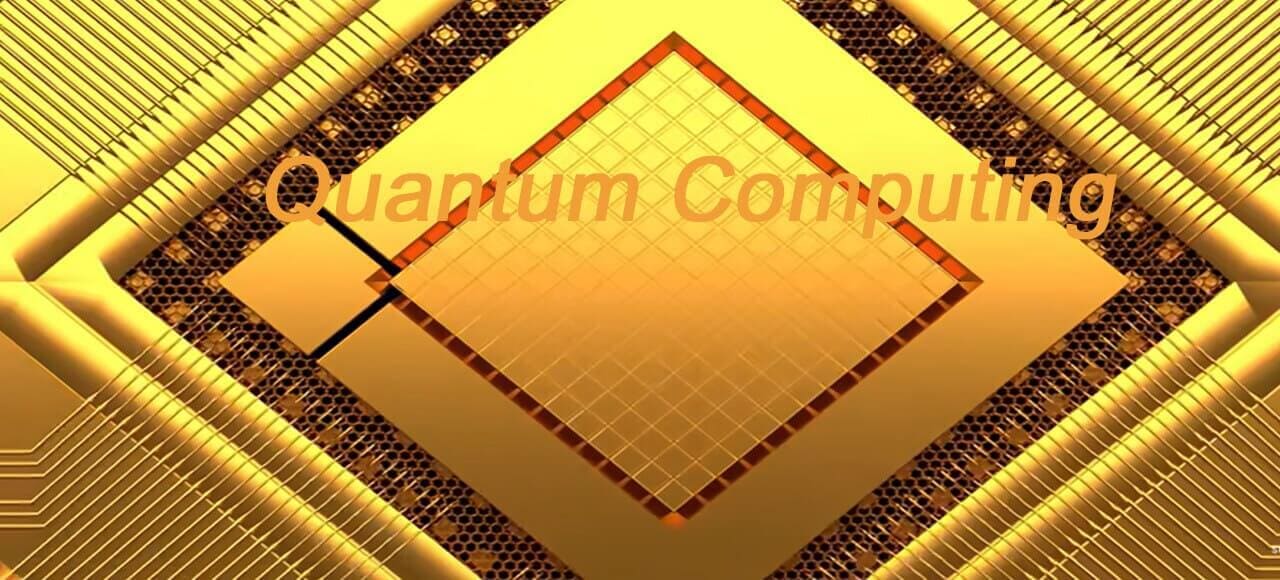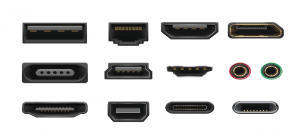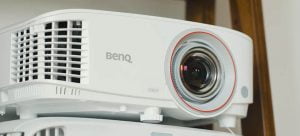The study of quantum computing is concerned with the creation of computer-based technologies based on the ideas of quantum theory.
The nature and behavior of matter and energy at the quantum (atomic and subatomic) level are explained by quantum theory.
To carry out certain computational operations, quantum computing employs a combination of bits. All of them perform far better than their classical equivalents.
The creation of quantum computers represents a significant advance in computing power, providing enormous performance advantages for certain application cases. For instance, simulations are one area where quantum computing thrives.
The capacity of bits to exist in several states simultaneously gives the quantum computer a large portion of its processing capability.
They are capable of carrying out tasks utilizing a mix of 1’s, 0’s, and both a 1 and a 0 at once. The Los Alamos National Laboratory, MIT, IBM, Oxford University, and Oxford University are some of the current quantum computing research hubs.
Additionally, cloud providers have started to allow developers access to quantum computers.
The first step toward quantum computing was identifying its constituent parts. Paul Benioff of Argonne National Labs first proposed the concept of a quantum mechanical computer in 1981.
It is widely acknowledged that David Deutsch from Oxford University came up with the crucial concept for research on quantum computing.
He started to consider if it may be possible to create a computer that only followed quantum laws in 1984, and a few months later he published a ground-breaking study on the subject.
What is quantum computing?
Quantum computing is a type of computing where information is processed using qubits, which are units of quantum information.
Quantum computers are able to solve problems faster than traditional computers, and are also able to explore different solutions to problems than classical computers.
Quantum computing is a well known and trending technology now.
Quantum Theory
After Max Planck gave a lecture in 1900, quantum theory started to take shape. Planck presented the notion that energy and matter are made up of discrete units to the German Physical Society.
The next thirty years saw more research by other scientists, which resulted in the contemporary knowledge of quantum theory.
The Basic Building Blocks of Quantum Theory
- Unlike a continuous wave, energy is made up of distinct components like matter.
- Depending on the circumstances, elementary particles of matter and energy may act either like particles or like waves.
- As a result of their intrinsic randomness, fundamental particles travel in unforeseen ways.
- It is difficult to simultaneously measure two complementary variables, such as a particle’s location and momentum. The measurement of the other value will be more inaccurate the more precisely one value is measured.
Quantum theory advancements in the future
The Copenhagen interpretation of quantum theory was first out by Niels Bohr. According to this theory, a particle is whatever it is measured to be; yet, until a particle is measured, it cannot be presumed to have any particular qualities or even to exist.
This pertains to the superposition principle. Superposition asserts that, as long as we don’t look to see what an object’s state is, it is truly concurrently in all of its conceivable states while we don’t know what that state is.
We may make use of the well-known example of Schrodinger’s Cat to demonstrate this hypothesis. We start by putting a live cat in a lead box.
The cat is definitely still alive at this point. Next, insert a vial of cyanide, and then close the box. We are unsure whether the cat is still alive or if it perished after breaking the cyanide capsule. The cat is in a superposition of states where it is both living and dead since we are unable to determine.
The superposition is destroyed when we open the box to reveal the cat’s state; at that point, the animal can only be either alive or dead.
It has significant consequences for computation because one particle may, in some sense, exist in several states.
3 primary categories of quantum computers and their uses
Quantum physics principles like superposition and entanglement are used in quantum computing. Simply explained, this implies that quantum computers employ qubits rather than bits, making them very quick at tackling challenging tasks.
For instance, the 0s and 1s used by a traditional computer to store data might just as well be replaced with voltages at various points in a circuit.
Qubits, however, work differently. Qubits have the special ability to exist in a superposition at the same moment, which means that despite their distance, 1 and 0 may be entangled and have the same physical characteristics.
A quantum computer with 100 qubits may simultaneously represent solutions due to superposition. Tech behemoths like Google, IBM, and Microsoft have begun developing models that are capable of re-creating the circuitry of a traditional computer.
Main 3 types of quantum computing
1. Quantum Annealer
It is said that the universal solution for optimization issues is quantum annealing. The most effective configurations among the many conceivable combinations of factors are continuously being explored by researchers.
The least efficient and restricted use of quantum computing is still predicted to be quantum annealing.
2. Analog Quantum Simulations
Physics issues that are far beyond the capabilities of classical systems may be addressed with the aid of analog quantum simulators.
Some of the most challenging biology issues, such modelling protein folding, are solved using quantum simulators. For instance, misfolded proteins often contribute to the development of disorders like Parkinson’s and Alzheimer’s.
Researchers will thus be able to examine whether medications can be employed as therapies with the use of a random computer model.
3. Universal Quantum
Universal computing, which is hailed as the most potent and widely utilized quantum computing, but also the most difficult to construct.
One million qubits, or more than 100,000 qubits, are believed to be accessible to universal computing in theory. We currently have very limited access to 129 qubits.
In order to direct a computer towards any difficult processing circumstance and yet get the best and quickest answer, this is known as universal computing.
Classical and Quantum Computing in Comparison
Boolean algebraic concepts are the foundation of traditional computing, which typically uses a 3 or 7-mode logic gate principle. At all times, processing of data must be done in one of two exclusive binary states: 0 (off/false) or 1 (on/true).
These quantities are binary bits. At any one time, the many transistors and capacitors that make up a computer can only be in one state. The rate at which these devices can be made to flip states is still constrained.
Smaller and quicker circuits push us closer to the physical limitations of materials and the breaking point for the application of classical physics.
The logic gate of the quantum computer has two operating modes: XOR and QO1 (the ability to change 0 into a superposition of 0 and 1).
Numerous elementary particles, such as electrons or photons, may be employed in a quantum computer. Every particle has a charge or polarization that serves as a representation of the numbers 0 and/or 1.
A quantum bit, or qubit, is the name given to each particle. Quantum computing and quantum supremacy are both based on the characteristics and actions of these particles.
The concepts of superposition and entanglement are the two components of quantum physics that are most important.
Superposition
A qubit may be compared to an electron in a magnetic field. The spin of the electron may either be aligned with the field, known as a spin-up state, or it can be offset from the field, known as a spin-down state.
An energy pulse, such as one from a laser, may be used to shift the electron’s spin from one state to another.
When a particle is isolated from all outside forces and just half a unit of laser energy is applied, the particle enters a superposition of states. acting as though it were concurrently in both states.
Utilized qubits were capable of superpositions of both 0 and 1. In other words, the maximum number of calculations a quantum computer can do is 2^n, where n is the total number of qubits used.
A 500 qubit quantum computer would be capable of doing 2^500 computations in a single step. For comparison, there are 2^500 times as many atoms as there are space in the known cosmos.
Through quantum entanglement, these particles all communicate with one another.
Quantum computing counts as genuine parallel processing when compared to traditional computing. Modern classical computers can still only effectively do one task at a time.
In traditional computing, parallel processing requires merely two or more processors.
Entanglement In a process known as correlation, particles (like qubits) that have interacted at some time and yet maintain a type may get entangled with one another in pairs.
Knowing the up- or down-spin state of one entangled particle reveals the opposite-direction spin of the other. Additionally, the observed particle does not have a single spin orientation prior to measurement owing to the superposition.
The correlated particle receives information about the spin state of the particle being measured at the moment of the measurement and immediately adopts the opposite spin direction. There is still no explanation for why.
Qubits that are far apart from one another may instantly interact thanks to quantum entanglement (not limited to the speed of light). No matter how far apart the associated particles are, as long as they are separated, they will stay entangled.
Quantum entanglement and superposition combined greatly increase computing power. A 2-qubit register in a quantum computer may hold all four numbers simultaneously, unlike a 2-bit register in a conventional computer that can only store one of the four binary configurations (00, 01, 10, or 11) at any one moment.
This is due to the fact that each qubit may store two values. The additional capacity grows exponentially as qubits are added.
Quantum Programming
The possibility to construct programs in an entirely novel manner is provided by quantum computing. One possible programming sequence for a quantum computer might be something like “take all the superpositions of all the earlier calculations.”
This might make it possible to find very quick solutions to certain mathematical issues, such the factorization of big integers.
In 1994, Peter Shor published the first quantum computing software. Shor created a quantum algorithm that effectively factorized enormous integers.
Advantages of quantum computing
- The fundamental benefit of quantum computing is that it can do computations using traditional algorithms. They are also simple to do, comparable to a traditional computer.
- The register’s storage capacity increases exponentially as qubits are added.
- The typical superposition state is present in this computing qubit. Exponential speedup has benefits over other methods for handling large numbers of computations.
- Less electricity was needed for quantum computing.
- Another benefit of quantum computing is that, in comparison to a traditional computer, it can do any work extremely quickly and precisely. In contrast to quantum computing, the atom often changes much more quickly in classical computing.
Disadvantages of quantum computing
- The investigation into this issue is currently ongoing in an attempt to find a resolution to this situation, which has not seen any improvement.
- Qubits cannot be used for traditional error correction since they are not modern digital bits.
- The biggest drawback of quantum computing is that the technology needed to build one is not now accessible.
- Quantum logical processes need five times as much energy as traditional computer operations.
- Heat generation and efficiency issues will be unique to quantum CPU.
- Decoherence is completely destroyed and the wave function collapses into a single state when any kind of measurement is performed to a quantum system.
A Few Solutions To The Problems
Although quantum computing has great promise, there are still significant challenges to be addressed. Following are a few issues with quantum computing:
- Interference: A quantum processor may collapse due to decoherence, which is caused by even the smallest disruption in a quantum system. During the calculation phase, a quantum computer must be completely insulated from any outside disturbance. Qubits have been used with some success with ions under strong magnetic fields.
- Qubits are not digital bits of data, hence they cannot be corrected for errors using traditional methods. In quantum computing, where even a single calculation mistake may render the whole computation invalid, error correction is essential. However, there has been a lot of advancement in this field. With the development of an error correction algorithm that makes use of 9 qubits, 1 for computation and 8 for repair. More recently, IBM made a breakthrough that uses just 5 qubits in total (1 computational and 4 correctional).
- Output observance: Data corruption may occur if output information is retrieved after a quantum computation has been completed. Since then, advancements have been achieved, including the development of a database search algorithm that makes use of the unique “wave” structure of the probability curve seen in quantum computers. This makes sure that after all computations are complete, the quantum state will decohere into the right response during the measurement process.
There are several issues to solve, such as handling security and quantum cryptography. The issue of long-term quantum information storage has come up before.
Nevertheless, developments during the last 15 years and more recently have made some types of quantum computing feasible. Whether this will happen in the next few years or one hundred years is still up for dispute.
But both the public and business sectors are very interested in the possibilities that this technology provides.
While civilian uses span from DNA modeling to complicated material science analyses, military applications include the capacity to crack encryption keys through brute force searches.
Recommended articles:
What is data science? All you need to know about data science
Artificial intelligence | types, categories, applications, examples goals
Top 30 latest technologies | Best trending technologies
Top 50 computer science jobs in the world | CSE student job career





Appreciation to my father who shared with me concerning
this website, this website is genuinely awesome.